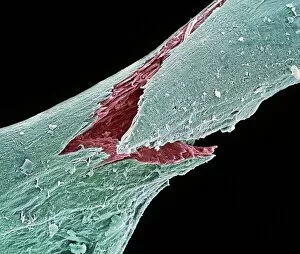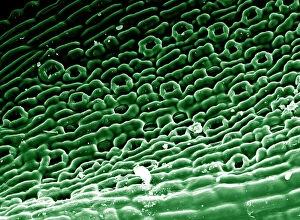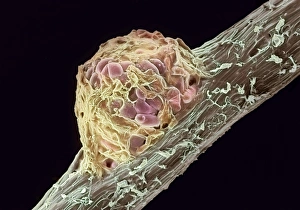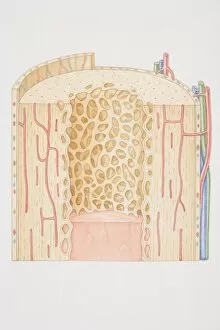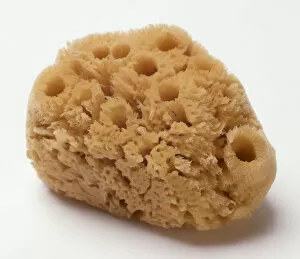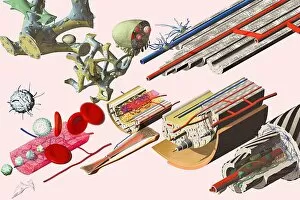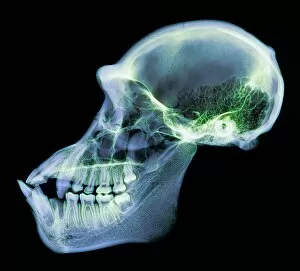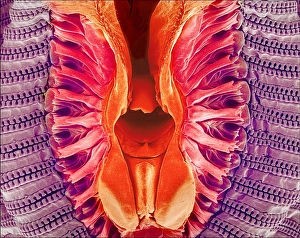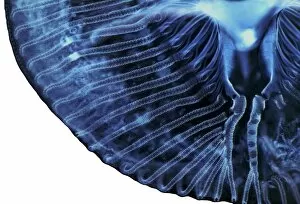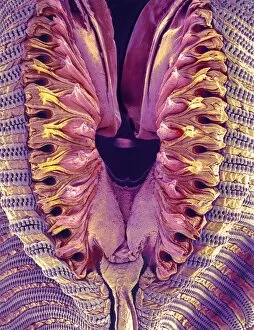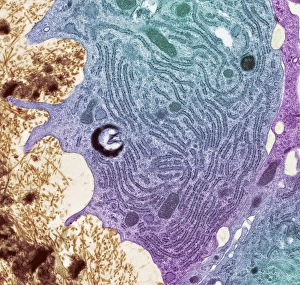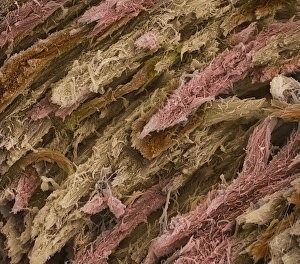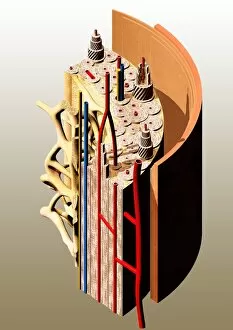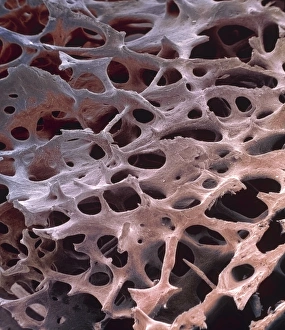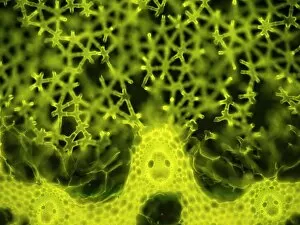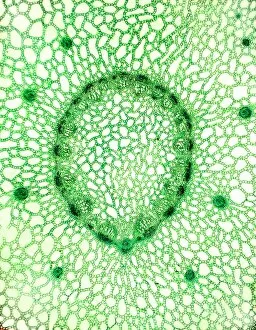Spongy Collection
"Spongy: Exploring the Intricate World of Bone Structure and Beyond" In this captivating journey
All Professionally Made to Order for Quick Shipping
"Spongy: Exploring the Intricate World of Bone Structure and Beyond" In this captivating journey, we delve into the fascinating realm of "spongy" - a term that takes us from osteoporotic bone to natural sponges, unveiling hidden wonders along the way. Starting with an image captured by a scanning electron microscope (SEM), Picture No. 11675585 reveals the intricate details of osteoporotic bone, showcasing its porous nature. This visual representation serves as a reminder of the fragility and importance of maintaining healthy bones. Moving on to Pfurtschellers Zoological Wall Chart, we encounter Sycon and Aplysina in Picture No. 12 - vibrant organisms that resemble sponges but exist in aquatic ecosystems. Their unique structures remind us that sponginess can be found not only within our bodies but also in diverse forms throughout nature. A cross-section diagram of a human long bone depicted in Picture No. 11675968 provides further insight into the complex architecture beneath our skin's surface. The interplay between compact and cancellous bone highlights how both strength and flexibility are crucial for optimal skeletal function. Shifting gears towards culinary delights, we encounter a mouthwatering close-up shot - Cross-section fruit pie. This delectable treat showcases how even food can possess elements reminiscent of sponge-like textures, inviting us to explore unexpected connections between taste sensations and anatomical features. Venturing back into nature's realm, we come across an awe-inspiring sight - a natural sponge floating effortlessly underwater. Its delicate yet resilient structure reminds us that beauty often lies within simplicity while offering inspiration for innovative materials design beyond traditional applications. Artwork C016 / 7494 presents Human Bone Structure as an artistic interpretation capturing the essence of our inner framework with striking visuals that merge science and creativity seamlessly together. Delving deeper into microscopic realms through light micrograph C016 / 0509, we encounter cancellous bone.

